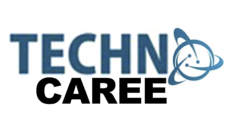Hybrid Work Monitoring Software – The Rise of Nannyware

The shift to hybrid work models has fundamentally changed how companies operate. While employees enjoy the flexibility of working from home, employers have faced new challenges in tracking productivity and ensuring the smooth running of operations. Enter hybrid work monitoring software – a tool designed to bridge this gap. However, the rise of such software has also sparked concerns over privacy and control, leading many to label it as “nannyware.”
What is Hybrid Work Monitoring Software?
Hybrid work monitoring software allows employers to track employee activities while they work remotely or in a mix of home and office settings. These tools monitor things like computer usage, screen activity, keystrokes, web browsing, and even the time employees spend on specific tasks. Some advanced versions include video feeds, tracking how often an employee is seen at their workstation.
This software is intended to increase transparency and accountability, helping employers ensure their teams are productive. With the rise of remote work, it’s become a popular way for businesses to manage teams, ensuring that employees remain engaged and focused during work hours.
The Pros of Hybrid Work Monitoring Software

- Increased Accountability: With employees working remotely, it’s harder for managers to keep tabs on everyone. Monitoring software provides a clear picture of how time is spent during the workday.
- Productivity Insights: Employers can track which tasks are being completed, how long they take, and identify potential productivity bottlenecks. This data can help managers optimize workflows and spot areas where support may be needed.
- Employee Performance Measurement: Tracking software can help businesses understand employee strengths and weaknesses, offering valuable insights that can lead to performance improvement.
- Security and Compliance: For companies in regulated industries, monitoring software ensures that employees adhere to security protocols and work within compliance guidelines while working remotely.
The Downside: Nannyware Concerns
While hybrid work employee monitoring software offers advantages, it also raises concerns. Softwares like Controlio are safe to use but still there are few things you need to take into account. Critics argue that such software is intrusive and goes too far in trying to control employees’ every move, turning it into “nannyware.”
- Privacy Invasion: Many employees feel that monitoring software invades their privacy, particularly when it tracks personal activities like personal phone calls or private browsing. The fear of being constantly watched can create a sense of distrust between employees and employers.
- Employee Morale: Constant surveillance can lead to anxiety, stress, and a decline in morale. Workers might feel that they’re being micromanaged and that their work is being questioned, even when they’re performing well.
- Focus on Quantity Over Quality: Monitoring keystrokes or tracking screen time can encourage employees to focus more on activity than productivity. This shift may lead to workers spending time on busy work rather than focusing on meaningful tasks.
- Lack of Autonomy: Hybrid work should ideally offer flexibility and trust. Monitoring software undermines that by prioritizing control over trust, ultimately affecting job satisfaction and loyalty.
Hybrid work monitoring software is here to stay, but companies need to find a balance. It’s crucial to foster a culture of trust while ensuring productivity and compliance.







